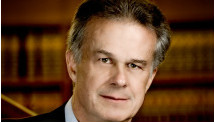JACKSON, Miss. – A large storm system packing high winds, rain and some possible tornadoes tore across several states in the South and central U.S. on Wednesday, blacking out power to thousands, downing trees and damaging homes.
One death was reported when a large tree blew down on a shed in Nashville, Tenn., where a man was sheltering, police told Nashville broadcaster WTVF-TV. Authorities did not immediately release further details when contacted by The Associated Press.
In Arkansas, another person was reported injured by lightning in Arkansas during the storm’s eastward trek. The severe weather ushered in a cold front that was headed toward the Eastern seaboard as it dumped rain over a wide area.
The rapidly changing conditions created a risk of tornadoes in the nation’s midsection and South. The National Weather Service’s Storm Prediction Center in Norman, Okla., said the threat was greatest in recent hours in northeast Texas, northern Louisiana, northwest Mississippi, southeast Missouri and much of Arkansas.
The center said it was investigating reports of at least four possible tornadoes in states including Arkansas and Mississippi. Hail ranging up to nearly golf-ball size was also reported in some areas and barns and other buildings collapsed or were damaged, the center added.
Thousands were reported without power in Tennessee, where tornado warnings and flash flood warnings were issued for several counties and a tractor-trailer truck was blown over by high winds.
Entergy Arkansas Inc. reported at least 9,000 power outages in several communities around Arkansas at the height of the storm, including in and around Little Rock.
Power lines fell, trees were toppled and some homes suffered damage to rooftops around the state, reports indicated. The weather service said suspected straight-line winds of up to 80 mph were reported in Arkansas late Tuesday night along with flooding in low-lying areas of Jonesboro in Arkansas’ northeastern corner.
Police in the Arkansas community of Monticello reported a person was injured by lightning late Tuesday but the injury was not life-threatening.
The Mississippi Emergency Management Agency urged residents to be on guard for severe thunderstorms, high winds and possible tornadoes Wednesday.
Earlier this week, a large swath of the Midwest and South bathed in unseasonably balmy temperatures that reached the high 70s in some areas.
The temperature in the central Missouri college town of Columbia reached 77 degrees on Monday, a record for January, and students exchanged their winter coats for shorts and flip-flops as freezing rain gave way to spring-like conditions. Foul weather made a quick return, however, with a Tuesday downpour that flooded some streets near the University of Missouri campus. Early morning snow was expected Wednesday.
Chicago residents also have been whiplashed by recent weather extremes. Workers who suffered through subzero temperatures and brutal wind chills a week ago strolled through downtown without coats Tuesday as temperatures soared into the mid-60s.
Carol Krueger, who lives in the Chicago suburb of North Hoffman Estates, noted that just a few days ago she was struggling to drive through blowing snow. All she needed Tuesday was a light jean jacket, although by Thursday temperatures were barely expected to reach 20 degrees.
“It’s bizarre, it’s scary,” Krueger said of the swiftly changing weather.
On Monday, the National Weather Service predicted a “moderate” risk of severe weather more than 24 hours out, only the fifth time it had done so in January in the past 15 years, said Gregory Carbin, the director of the Storm Prediction Center.
A system pulling warm weather from the Gulf of Mexico was colliding with a cold front moving in from the west, creating volatility.
The nation has had its longest break between tornado fatalities since detailed tornado records began being kept in 1950, according to the Storm Prediction Center and National Climatic Data Center. The last one was June 24, when a person was killed in a home in Highlands County, Fla. That was 220 days ago as of Tuesday.
The last day with multiple fatalities was June 4, when three people were killed in a mobile home in Scott County, Mo.
Copyright 2013 The Associated Press. All rights reserved. This material may not be published, broadcast, rewritten or redistributed.
Weather News Headlines – Yahoo! News
Title Post: Severe weather rakes US midsection
Url Post: http://www.news.fluser.com/severe-weather-rakes-us-midsection/
Link To Post : Severe weather rakes US midsection
Rating:
100%
based on 99998 ratings.
5 user reviews.
Author:
Thanks for visiting the blog, If any criticism and suggestions please leave a comment


